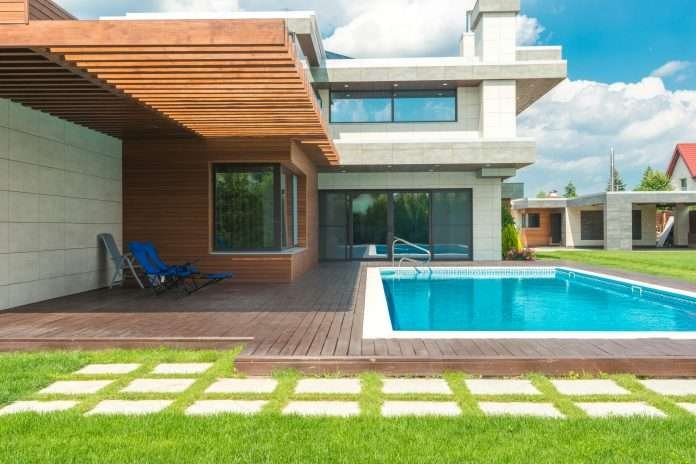Owning a period property is a privilege that comes with a unique set of responsibilities, particularly when it comes to maintaining and enhancing the historic character of your home. Windows play a crucial role in defining the architectural style and aesthetic of a period property, so choosing the right window options is essential to preserving its authenticity and charm. In this blog post, we’ll explore the best window options for period properties, helping you make an informed decision that balances historical accuracy with modern performance and functionality.
Identify Your Property’s Architectural Style
The first step in selecting the best window options for your period property is to identify its specific architectural style. Different historical periods and architectural movements featured distinct window designs, so understanding your home’s style will help guide your choices.
Some common period architectural styles in the UK include:
- Georgian (1714-1830): Georgian windows are typically tall and narrow, with a “six over six” pattern of small panes.
- Victorian (1837-1901): Victorian windows often feature a “two over two” or “four over four” pane configuration and may include decorative elements like coloured glass or intricate mouldings.
- Edwardian (1901-1914): Edwardian windows are characterised by their large, uncluttered panes of glass, often arranged in a “six over one” or “eight over one” pattern.
- Art Deco (1920s-1930s): Art Deco windows often feature geometric shapes, bold lines, and decorative leadwork or stained glass.
By identifying your property’s architectural style, you can narrow down your window options and choose designs that are historically appropriate and visually harmonious with your home’s overall aesthetic.
Consider Authentic Timber Windows
For many period properties, authentic timber windows are the most historically accurate and visually appropriate option. Timber windows were the standard choice for centuries, and they offer a warmth, character, and craftsmanship that is difficult to replicate with modern materials.
When selecting timber windows for your period property, look for high-quality, sustainably sourced wood species that are well-suited to your local climate. Durable, stable options like oak, sapele, or accoya can provide excellent long-term performance and resistance to weathering, rot, and insect damage.
To ensure historical accuracy, work with a specialist timber window manufacturer or joiner who has experience creating windows for period properties. They can help you select the appropriate window styles, profiles, and glazing options to suit your home’s architectural style and era.
Explore Slimline Double Glazing
While traditional single-glazed windows may be the most historically accurate option for period properties, they can also be drafty, inefficient, and prone to condensation. To improve the thermal performance and comfort of your home without compromising its historic character, consider exploring slimline double glazing options.
Slimline double glazing features a narrower cavity between the two panes of glass, allowing for a more slender and historically appropriate window profile. This type of glazing can be incorporated into authentic timber window designs, providing a discreet and visually sympathetic solution for period properties.
When selecting slimline double glazing, opt for products with a minimum 4mm cavity and a total glazing thickness of around 12mm. This will help ensure optimal thermal performance while maintaining a delicate, period-appropriate appearance.
Investigate Secondary Glazing
If you are unable or unwilling to replace your period property’s original windows, secondary glazing can provide an effective alternative for improving thermal performance and reducing drafts and noise. Secondary glazing involves installing a separate glazed unit on the inside of your existing windows, creating an additional barrier against the elements.
Secondary glazing can be particularly useful for listed buildings or conservation areas, where planning restrictions may limit your ability to replace or modify original windows. By preserving your home’s historic fabric while enhancing its comfort and efficiency, secondary glazing offers a pragmatic solution for period property owners.
When selecting secondary glazing, look for products that are designed to be as unobtrusive as possible, with slim frames and clear sight lines that minimise visual impact. Some secondary glazing units can also be designed to be easily removable, allowing for periodic cleaning and maintenance of your original windows.
Prioritise Authentic Hardware and Detailing
In addition to selecting historically appropriate window styles and materials, it’s essential to pay attention to the finer details of your period property’s windows. Authentic hardware, such as window catches, stays, and pulleys, can make a significant difference in preserving the character and integrity of your home.
When replacing or restoring your period windows, look for high-quality, traditionally designed hardware that matches the style and era of your property. Avoid modern, anachronistic fittings that can detract from the historical accuracy of your windows.
Similarly, be mindful of preserving or replicating any decorative elements or mouldings that are integral to your period windows. These may include intricate glazing bars, ornate horns, or carved details that contribute to the unique character of your home.
Work with Specialist Suppliers and Craftspeople
Choosing the best window options for your period property is a complex and nuanced process that requires specialist knowledge and expertise. To ensure the best possible outcomes for your home, it’s essential to work with suppliers, manufacturers, and craftspeople who have extensive experience in heritage fenestration.
Look for companies that specialise in period window design, manufacture, and installation, and that have a proven track record of working with historic properties. These specialists can provide invaluable guidance and support throughout the process, helping you navigate the challenges of balancing historical authenticity with modern performance and regulatory requirements.
Additionally, consider engaging the services of a specialist heritage consultant or conservation architect who can provide expert advice on the most appropriate window options for your specific property and architectural style. Their knowledge and insights can be invaluable in helping you make informed decisions that preserve and enhance the historic character of your home.
Conclusion
Selecting the best window options for a period property is a process that requires careful consideration, specialist knowledge, and a deep appreciation for the unique character and heritage of your home. By identifying your property’s architectural style, exploring authentic timber windows, considering slimline double glazing or secondary glazing, prioritising period-appropriate hardware and detailing, and working with specialist suppliers and craftspeople, you can make informed choices that balance historical accuracy with modern performance and comfort.
Remember, the windows you choose for your period property will have a significant impact on its appearance, functionality, and long-term value. By investing in high-quality, historically appropriate window solutions, you can ensure that your home remains a beautiful, authentic, and cherished example of its architectural era for generations to come.







